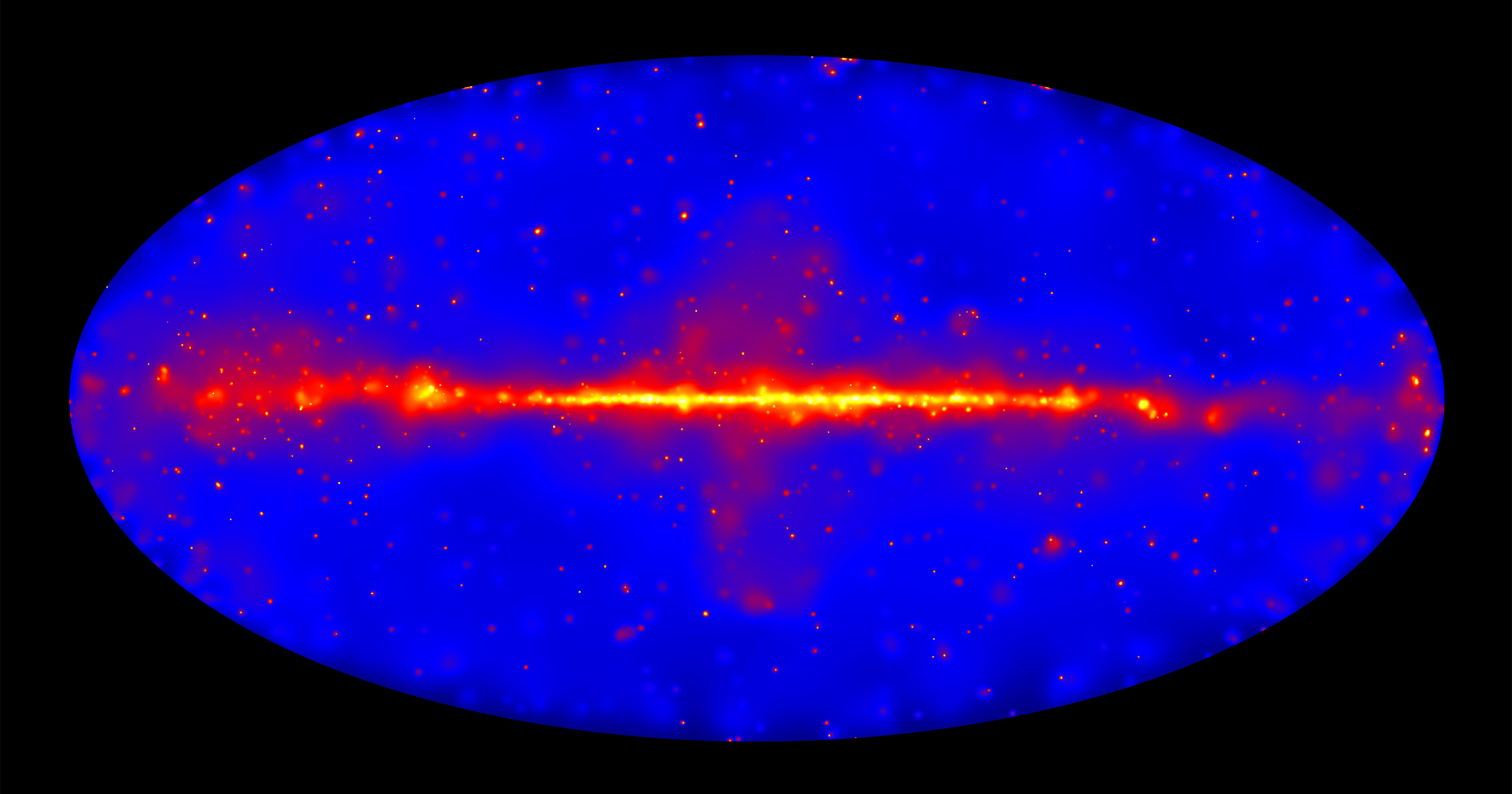Gamma-ray Astronomy
What can gamma rays tell us about the cosmos? Gamma-rays are the most energetic form of electromagnetic radiation, with over 10,000 times more energy than visible light photons. The familiar sights of constantly shining stars and galaxies that can be seen in visible light are replaced by a background glow and ever-changing sources. Gamma-rays allow astronomers to peer into the hearts of solar flares, supernovae, neutron stars, black holes, and active galaxies. By exploring the universe at these high energies, scientists can search for new physics, testing theories and performing experiments which are not possible in earth-bound laboratories.

This image shows how the entire sky appears in gamma-ray light at energies between 50 billion (GeV) and 2 trillion electron volts (TeV). For comparison, the energy of visible light falls between about 2 and 3 electron volts. A diffuse glow fills the sky and is brightest in the middle of the map, along the central plane of our galaxy. The famous Fermi Bubbles, first detected in 2010, appear as red extensions north and south of the galactic center. Discrete gamma-ray sources include pulsar wind nebulae and supernova remnants within our galaxy, as well as distant galaxies called blazars powered by supermassive black holes. (Credit: NASA/DOE/Fermi LAT Collaboration)
When it launched, Fermi had a number of science objectives it was tasked with exploring:
- Explore the most extreme environments in the Universe, where nature harnesses energies far beyond anything possible on Earth.
- Search for signs of new laws of physics and what composes the mysterious Dark Matter.
- Explain how black holes accelerate immense jets of material to nearly light speed.
- Help crack the mysteries of the stupendously powerful explosions known as gamma-ray bursts.
- Answer long-standing questions across a broad range of topics, including solar flares, pulsars and the origin of cosmic rays.
During its more than decade in orbit, Fermi has made contributions to all of those areas. Check out a few of the highlights in the video below or read more about them in the news stories about Fermi.


